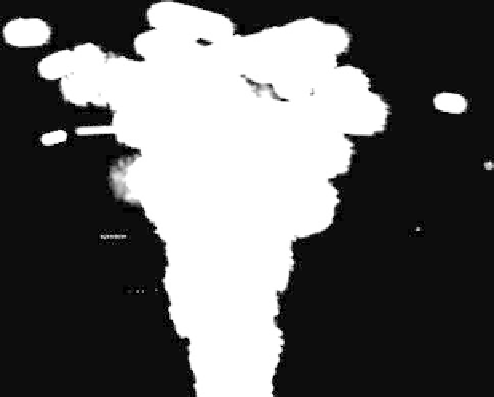Graphics Reference
In-Depth Information
The previous example demonstrated one technique for animating a
particle system in the vertex shader. Although it included an efficient
method for animating particles, the result was severely limited compared
to a traditional particle system. In a typical CPU-based particle system,
particles are emitted with different initial parameters such as position,
velocity, and acceleration and the paths are animated over the particle's
lifetime. In the previous example, all of the particles were emitted
simultaneously and the paths were limited to a linear interpolation
between the start and end positions.
We can build a much more general-purpose GPU-based particle system by
using the
transform feedback
feature of OpenGL ES 3.0. To review, transform
feedback allows the outputs of the vertex shader to be stored in a buffer
object. As a consequence, we can implement a particle emitter completely
in a vertex shader on the GPU, store its output into a buffer object, and
then use that buffer object with another shader to draw the particles. In
general, transform feedback allows you to implement render to vertex
buffer (sometimes referred to by the shorthand R2VB), which means that a
wide range of algorithms can be moved from the CPU to the GPU.
The example we cover in this section is found in
Chapter_14/
ParticleSystemTransformFeedback
. It demonstrates emitting particles
for a fountain using transform feedback, as shown in Figure 14-4.
Figure 14-4
Particle System with Transform Feedback


